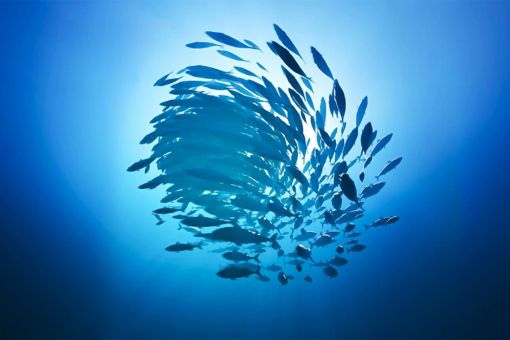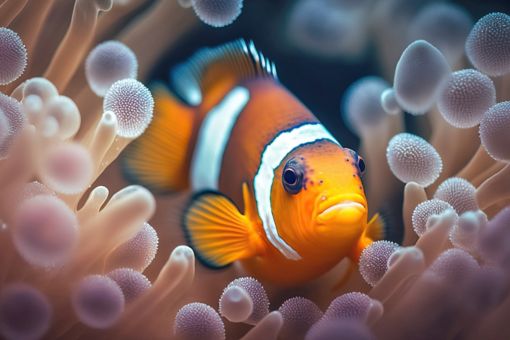The new UN Ocean Agreement on Marine Biological Diversity of Areas Beyond National Jurisdiction
The marine environment is vast, extending over an area in excess of 70% of the Earth’s surface and with 95% of the total ocean volume considered as ocean areas beyond national jurisdiction (ABNJ). The ocean supports a diverse range of habitats, species and ecosystem services which humanity relies upon every day for food, medicine, and the air we breathe. Overfishing, pollution, climate change and other human activities within the marine space have unfortunately contributed towards the rapid decline in ocean health over recent years. Since more than two-thirds of the ocean area falls outside the national jurisdiction of any single State, it has been difficult to enact policy to protect and sustainably manage these waters to the ultimate benefit of us all.
United Nations Biodiversity Beyond National Jurisdiction Agreement
In order to address and overcome these challenges, the UN initiated formal negotiations in 2018 for a new international legally binding instrument under the auspices of the UN Convention on the Law of the Sea for the conservation and sustainable use of marine biological diversity of areas beyond national jurisdiction (BBNJ)1 . Breakthrough progress was made in March this year when State parties reached agreement on the historic BBNJ Agreement. The new agreement provides an international legal framework that governs human activities within or linked to these massive ocean areas. For example, it includes provisions pertaining to the creation of marine protected areas as well as access to and benefit sharing associated with marine genetic resources. The agreement covers a ‘package’ of four key elements plus cross-cutting issues (see Figure 2)
- Marine genetic resources, including questions on the sharing of benefits;
- Measures such as area-based management tools, including marine protected areas;
- Environmental impact assessments, and;
- Capacity-building and the transfer of marine technology

Implementation of the UN BBNJ Agreement
It is anticipated that the BBNJ Agreement will be adopted in June 2023. Entry into force will then require 60 individual State ratifications and take place 120 days after the 60th ratification. When the BBNJ Agreement has entered into force, provisions will then become binding on State Parties. Next, States will take steps to implement the treaty by transposing it into their national legislation. At that stage the agreement will become fully binding on companies and organizations or entities who conduct activities that fall within the scope of the agreement.
A wide variety of sectors will be affected by the new BBNJ Agreement, given that they will then be required by international law to comply with the legislation. These sectors range from academic research institutions through to pharmaceutical, nutraceutical, chemical, shipping and subsea cable or telecommunications companies. However, although awareness is growing, general understanding of the agreement, it’s provisions and future ramifications remains relatively under appreciated. In addition, elements of the new agreement are complex and questions remain in terms of the specific obligations to be imposed and how compliance will be enforced. New supporting agencies will be created as a product of the BBNJ Agreement, such as the scientific and technical body, and the implementation and compliance committee. These bodies, together with the Conference of the Parties, may help to answer questions associated with implementation or workability of the agreement. In addition, guidelines may also be developed at the international / national level to further support understanding and compliance.
How businesses can kickstart their BBNJ journey
International focus on the importance of nature and biodiversity is growing. Adoption of the BBNJ Agreement, and the requirement for businesses to comply with associated legislation once implemented, will constitute one of several biodiversity-related regulations which have emerged over recent years with the aim of promoting environmental protection. The Convention on Biological Diversity (CBD, 1992) is another global multilateral environmental agreement which provides for global governance of biodiversity. The Conference of the Parties to the CBD recently adopted the ‘Kunming-Montreal Global Biodiversity Framework’ (GBF) which includes four goals and 23 targets for achievement by 2030. As such, the GBF sets out a framework through which countries can help to promote nature-positive outcomes. The Taskforce on Nature-related Financial Disclosures (TNFD, 2023), a market-led, science-based and government supported initiative, is currently under development with the aim of helping businesses understand how they can best report and disclose their nature related risks and opportunities. As a result of this shift in the regulatory and market landscape, as well as growing appreciation for the value of our natural environment, organizations worldwide are increasingly striving to put nature at the heart of decision-making.
In order to support conservation and sustainable use of the marine environment, and to prepare for implementation of BBNJ related regulations, there are a number of steps that businesses can take now:
- Consider your organization’s current understanding of the BBNJ agreement
- Become familiar with the key components of the BBNJ agreement
- Understand the areas of the agreement that are most likely to impact your organizations activities, and the activities associated with your supply chain
- Develop a list of key impacts and dependencies on nature, as well as the key risks and opportunities, then integrate these into a plan of priorities to focus on
- Create a roadmap to illustrate the course of action that your business will take to promote best practice in compliance with BBNJ provisions, including periodic review to consider any changes across business functions
Addressing the above points can help to inform your strategic direction in terms of compliance with BBNJ provisions. In addition, points 4 and 5 could be considered as part of a corporate ‘impacts and dependencies on nature’ assessment, thereby contributing towards a wider nature strategy that businesses adopt. This helps to prepare for emerging voluntary (and soon to be regulated) nature-reporting requirements across a number of key frameworks and standards.
Conclusion
The BBNJ Agreement represents momentous progress in terms of promoting the conservation and sustainable use of our ocean environment. It also marks a crucial step forward in global cooperation to protect nature and biodiversity resources for the future. The ocean is key in helping us deliver on a number of environmental objectives, including our climate targets by representing a massive sink and store for CO2. The agreement has significant implications for businesses with operations or supply chains that rely on activities in the ocean, with the imposition of new regulations and ultimately penalties for compliance failure. As the focus on protection and responsible, sustainable management of natural resources continues to gain momentum, understanding the BBNJ Agreement and impact on activities linked to the ocean is expected to be crucial.
1 Intergovernmental Conference on Marine Biodiversity of Areas Beyond National Jurisdiction
How the “blue economy” can offer growth amid economic volatility
As global economic uncertainties persist, businesses and governments have been seeking new ways to create stability. Enter the ocean economy, often referred to as the “blue economy”, which presents itself as an attractive option for reliable growth and diversified investments. This sector also plays a significant role in advancing the world's climate goals.
Currently, over 90 percent of global trade is carried out through the world’s oceans. The Organisation for Economic Co-operation and Development (OECD) estimates that the ocean economy could double in size from US$1.5 trillion in global value added in 2010 to US$3 trillion by 20301, making it a crucial driver for global growth. Coastal manufacturing, fisheries and aquaculture, coastal and marine tourism, oil and gas, ecosystem conservation, and other activities conducted in on or under the sea all offer various business opportunities.
However, while governments and businesses prioritize measures to promote energy transition and renewables, along with measures to grow a green economy, there is a noticeable absence of dialogue around investments and profitable (or bankable) ocean projects that can present vast business potential.
Filling the ocean economy financing and data gaps
To help unlock the potential of oceans for lasting growth, Singapore’s financial sector and businesses should collaborate to address funding and data gaps that persist despite existing efforts to drive the ocean economy. By engaging with networks of prominent corporates, business owners and investors across seemingly distinct sectors, momentum and investments can be created to achieve sustainable blue solutions.
While global investment capital is abundant, finding high-quality, investable projects with appropriate deal sizes and risk-return ratios to match available capital can be challenging. Furthermore, having to put a quantifiable value or return on investment on ocean projects can pose an additional hurdle, making access to funding for bankable ocean projects challenging.
Without a lack of convincing business cases or reliable ocean data, the financial sector can experience difficulties in recognizing bankable projects. In addition, KPMG’s Survey of Sustainability Reporting 2022 reveals that only 18 percent of all companies are prioritizing the United Nations’ Sustainable Development Goal (SDG) 14: Life Below Water, despite independent research indicating a need for an estimated US$175 billion per year to fund SDG14.
Hence, collaborative action is needed to accelerate the co-creation of innovative products, services, platforms and business models able to redirect and deploy liquidity and capital, thereby helping to unlock the potential of the oceans for both the economy and the environment. These efforts can also catalyze new public-private financing approaches, such as blended finance, so that blue solutions can be piloted while enhancing returns for various stakeholders and risk protection.
Businesses should also play an equally active role in democratizing data and technology to achieve a sustainable blue economy. With an increasing demand for sustainable private sector investments, targeted investment vehicles such as funds, bonds and project financing structures can help significantly improve the bankability of projects. Access to valuable and quantified data can also arm financial sector players with valuable insights and investment confidence.
Accelerating the growth of innovation ecosystem platforms
To capture steady growth amid the current climate of instability, industry-led platforms can connect investors, public and private companies, specialists, non-governmental organizations and academics to bring blue solutions to successful commercialization. These platforms can also raise awareness of the ocean economy by dispelling the misconception that inland activities have no impact on the ocean.
For instance, accelerator events like KPMG's Ocean Economy Accelerator, which was last held in Singapore in March 2023, can bring together some of the best minds to ideate new solutions and raise the profile of bankable blue projects. By bringing together industries, businesses can develop solutions such as data platforms for sustainable shipping and Internet of Things (IoT) sensors for monitoring and restoring mangrove ecosystems. Accelerator events also provide practical support to help bring solutions to life, secure funding for further investment, and ensure impact integrity for companies seeking to invest in the ocean economy.
Ultimately, we believe Singapore’s financial sectors and businesses will need to work in hand in hand in purpose-led ecosystems to help bridge gaps in the ocean economy, whether in finance or data. These efforts can help make the oceans more investable, giving rise to business-driven solutions with real-world impact on the ocean’s health, jobs, livelihoods and economies. It is through these collaborative efforts that businesses can weather disruptions and be poised to achieve sustainable blue growth.
1 Ocean economy and innovation, OCED
2 Originally published in the Business Times.
The climate crisis is deepening. It’s time to respond and the ocean is our secret weapon.
In March, representatives and leaders from governments across the world signed an agreement billed as a turning point for the world’s oceans. The UN meeting led to an agreement in principle to a High Seas Treaty—a legally robust framework aimed at conserving marine biodiversity and implementing measures that protect our waters, especially waters beyond the jurisdiction of individual countries and territories.
It’s a bold, aggressive plan aiming to stop and even reverse the loss of our planet’s most precious resources. With my realist hat on, I’m inclined to suggest that we’ve been here before. Some critics were quick to point out that parts of the agreement exceeded the mandate of the gathering. Others highlighted that action didn’t focus enough on the needs of the planet’s most vulnerable countries. These critiques underscore the fact that the real, hard work begins now.
World Ocean Day 2023 is an opportunity for us to reflect on the most precious resource on Earth. Our seas and waters are home to incredible biodiversity and act as a crucial carbon sink. At KPMG we consider the ocean to be our vital ally. The Intergovernmental Panel on Climate Change estimates that the world will need to remove up to 10 gigatonnes of carbon (GtC) from the atmosphere annually by 2030 to avoid the planet surpassing the Paris agreement target of 1.5 degrees of global warming above pre-industrial levels by 2050. Failure to meet this goal could result in irreversible damage and leave a legacy of destruction for future generations.
The recent actions taken at the UN present an opportunity for positive change. While we often focus on technology-driven solutions to sustainability, harnessing the power of the ocean can prove to be cheaper, quicker and more effective in mitigating the climate crisis. Blue-carbon ecosystems such as mangroves, tidal and salt marshes, seagrasses and open ocean food webs and nutrient cycles have the capacity to store the carbon generated by humans. If we embrace the principles of the High Seas Treaty and work together to fully exploit the power of the ocean’s biodiversity, we could reduce net emissions by nearly 4GtC annually by 2030, and potentially 11GtC annually by 2050.
Conversely, if nothing is done, we risk the ocean’s power turning against us. Biodiversity is a powerful force, but it’s also fragile. If disrupted and not fully supported, it has the potential to release carbon into the atmosphere, exacerbating the global climate crisis.
There are reasons to be optimistic. Pending approval from the French Directorate-General for Energy and Climate, France is poised to roll out the world’s first functioning carbon-credit methodology for seagrass. The new system will enable French companies to invest in increasing biodiversity in the Calanques National Park by protecting seagrass beds in exchange for carbon credits that can offset emissions. The scheme is phase one of a multimillion-euro project in France aimed at harnessing the power of the Mediterranean to support the country’s response to climate change.
We are at a turning point in human history. Climate summits, mounting stakeholder and investor pressure, and increasing consensus among political leaders are helping to steer us towards real, decisive action that could reverse the potentially catastrophic environmental future we face. Actions like those outlined in France will make a difference, but we need to see similar initiatives on a global scale, and ensure simplicity and consistency for businesses to be able to adopt these principles. Now is the time to embrace the principles of the new ocean treaty and develop a blue-carbon verification framework for regions. While some may criticise the increasing globalisation of our world, the reality is that businesses and people are increasingly living, working, and flourishing across borders. An international framework that enables companies to commoditise carbon sequestered by blue-carbon ecosystems and sell credits on the verified carbon market could unlock massive potential for positive change.
The blue economy is an untapped opportunity for advancing climate and nature-positive plans. Many of the world’s most vulnerable nations and territories are surrounded by ocean, presenting a chance not only to support their drive to prevent destruction, but also to transform them into economic powerhouses at the forefront of more sustainable economic path.
Take a moment today to appreciate the beauty and vastness of our oceans—they could be our biggest ally in the struggle against the climate and nature crisis.
1 Originally published in the Economist.
Turning the tide on climate change. Utilizing our oceans for energy and carbon capture.
When I talk to industry leaders about their decarbonization strategies and net zero targets, using our oceans to produce energy or capture carbon is rarely discussed. Ahead of World Ocean Day, it is, however, top of mind. Every year, on 8 June, we have a chance to both celebrate and reflect on the importance of the world’s oceans. Foremost, World Oceans Day is a call to action - to protect our oceans - more crucial than ever as climate change worsens.
What our oceans can offer to help the fight against climate change is our unique mangroves, seagrass, kelp, and mud flats, among other blue ecosystems, can store much higher volumes of carbon than trees1.However, these natural carbon sinks are, today, some of the most threatened ecosystems on Earth. Also, through their waves, tides, currents, wind speeds and locations, oceans are effective renewable energy producers, meaning they can reduce the amount of carbon in our atmosphere too. In particular, floating offshore wind is likely to become one of the most important renewable energy solutions.
Offshore wind power
The power of water and wind has been channeled for millennia, but in more recent times, they have been harnessed to produce ever larger amounts of clean energy. The most mature ocean energy sector today is undoubtably, offshore wind, fixed and floating. With advantages of scale and efficiency and supported by strong policy signals such as the Inflation Reduction Act and the EU Green Deal, global offshore wind generation capacity has grown to around 64 GW. According to the Global Wind Energy Council (GWEC), the past two years (2021 and 2022) saw the highest amounts of new offshore wind capacity installed in history2.
China is a good example of a country investing heavily in offshore wind. Its capacity has grown rapidly over the last decade, and, at 30 GW, is the largest in the world3. By the end of this decade, the UK aims to be meeting one third of its power demand using offshore wind4, while the USA expects to have installed 30 GW of offshore wind capacity5. Floating offshore wind power generation is also developing, with the GWEC predicting global capacity at 16.5 GW by 20306.
Offshore wind also has the advantage of being able to support other renewable energy sectors such as green hydrogen, important for driving the transition in transportation and the hard-to-abate sectors like steel. In 2022, France inaugurated the world’s first offshore hydrogen production facility powered by a floating wind turbine7.
Now, as World Oceans Day approaches, I am wondering, as we aim to transform our energy system, and meet the goals of the Paris Climate Agreement, what else can our oceans offer?
Beyond wind
Some of the most promising new renewable energy schemes today involve our oceans, either using floating solar farms or harnessing the power of their tides, waves, and currents. Oceans can also create thermal energy from variable water temperatures, and osmotic energy, from differences in salt concentrations (although these technologies are still relatively immature).
The rising cost of energy, as well as net zero targets, has boosted global interest in floating solar farms. With cost and performance advantages over conventional technologies and onshore solar generation (due to operating in cooler ocean environments) floating solar farms are developing fast in Asia and the USA. Portugal, meanwhile, recently inaugurated Europe’s largest solar farm on the Alqueva reservoir; with an installed capacity of 5 MW, it generates enough electricity to power 15,000 homes8.
Power generation from ocean energy installations, including tidal and wave power, is expected to reach 3 GW in the next five years and 350 GW by 20509. Tidal power generation uses the natural rise and fall of ocean tides to generate power, and has a huge advantage over other forms of renewable energy, such as wind or solar, as it is entirely predictable, often for years in advance. While wave power has great potential, theoretically the waves off the USA could generate over 60 percent of that country’s total annual power demand10, it is much harder to develop due to the more extreme water conditions.
Tidal energy is showing great promise. It generally uses one of three different technologies, tidal streams, barrages, and tidal fences with tidal streams the more mature and cost-effective technology. As costs continue to decline, investment grows, and innovation expands, the current 3 MW of global tidal stream power generation capacity11 is set to increase rapidly over the next decade.
The UK is at the forefront of tidal energy research and development with around 25 percent of Europe’s tidal resource12. In early 2023, it hit a significant milestone when the Pentland Firth tidal stream project off the Orkney Islands, became the first in the world to generate over 50 GWh of electricity13. Meanwhile, there are still relatively few large tidal barrage projects globally (the largest being the Sihwa Lake Tidal Power Station in South Korea14), as, despite being relatively efficient, they remain prohibitively expensive.
Carbon Capture and Storage (CCS)
With over 80 percent of the global carbon cycle circulating through our oceans15, they have an important role to play mitigating climate change. In addition to natural ocean ecosystems, which already store huge volumes of carbon, our oceans, supported by new capabilities and investments, can also host manmade CCS projects. At the end of last year, for example, a South east Asian oil company gave the green light to the world’s largest offshore CCS project, Kasawari, which will have the capacity to reduce CO2 emissions by 3.3 million tons per year and should be a catalyst to develop end-to-end CCS capabilities16.
There are also a wide variety of coastal carbon capture initiatives underway. Some of the most innovative involve spreading large volumes of ground olivine (a common mineral) onto coastlines. When olivine is dissolved into seawater, its natural high carbon absorption properties means it can substantially increase the natural CO2 uptake of our coastlines and oceans17.
Protecting our oceans
World Oceans Day aims to draw attention to the goal of protecting at least 30 percent of our ecosystems, including wetlands, rainforests, grasslands, and coral reefs, by 203018. Ocean energy and carbon capture projects can help. As power generated from offshore wind, floating solar and tidal energy projects replaces that from fossil fuels, our oceans will be more carefully monitored and regulated. New ocean energy and CCS projects should bring potential benefits such as job creation and technology development. With their ability to prevent the production of carbon emissions and sequester huge volumes of carbon, our oceans are unique in the fight against climate change. I will be sure to include them in future client conversations.
1https://www.thebluecarboninitiative.org/about-blue-carbon#ecosystems
2https://gwec.net/wp-content/uploads/2023/04/GWEC-2023_interactive.pdf
3https://www.economist.com/britain/2022/11/24/why-britain-is-a-world-leader-in-offshore-wind
4https://www.renewableuk.com/news/508787/Report-highlights-role-of-renewable-hydrogen-and-growth-of-wind-power-in-UKs-future-energy-system.html
5https://gwec.net/wp-content/uploads/2023/04/GWEC-2023_interactive.pdf
6https://gwec.net/wp-content/uploads/2023/04/GWEC-2023_interactive.pdf
7https://www.offshorewind.biz/2022/09/22/worlds-first-offshore-green-hydrogen-production-platform-launched-in-france/
8https://www.weforum.org/agenda/2022/05/portugal-europe-floating-solar-farm-renewable-energy/
9https://www.irena.org/Publications/2023/Mar/Scaling-up-investments-in-ocean-energy-technologies
10https://www.eia.gov/energyexplained/hydropower/wave-power.php
11https://www.cnbc.com/2023/02/21/firm-announces-world-first-as-tidal-power-project-passes-milestone.html
12https://www.scotland.org/inspiration/orkney-tidal-turbine-breaking-energy-generation-records#:~:text=In%202021%20an%20incredible%20new,via%20the%20grid%20in%20Orkney.
13https://www.cnbc.com/2023/02/21/firm-announces-world-first-as-tidal-power-project-passes-milestone.html
14https://www.hydropower.org/blog/technology-case-study-sihwa-lake-tidal-power-station
15https://www.thebluecarboninitiative.org/
16https://www.petronas.com/media/media-releases/petronas-carigali-reaches-final-investment-decision-kasawari-ccs-project
19https://www.vesta.
18https://worldoceanday.org/victory-a-global-commitment-to-30x30/
The two-million-dollar whale?
Placing an economic value on the world’s species can influence conservation policy.
Whales are amongst the most beautiful, majestic, and awe-inspiring creatures on the planet.
They also play a vital role in the ocean ecosystem by feeding on microorganisms in the depths of the ocean and then travelling back to the surface to breathe and excrete, which releases large amounts of nutrients that fertilize the surface waters. This process, known as a ‘whale pump’, rapidly support surface level phytoplankton to transform carbon dioxide into life-sustaining oxygen. The nutrients also provide food for krill, small fish, and larger marine mammals in what’s known as a ‘trophic cascade’ between different levels of the food chain.
But can you put an economic value on whales and their contribution to ecosystems?
Economists at the International Monetary Fund (IMF) have attempted to perform the complex task of calculating the ‘use value’ of whales – based on current, planned, and possible uses. Direct economic value comes from the whale-watching industry and the contribution of whales to the fishing industry through fish stock enhancement. Then there’s indirect economic value created through ecosystem services, by enhancing phytoplankton productivity and acting as carbon sinks. The analysis estimates the use value of whales to be US$2 million per whale across several species.
The methodology used by the IMF is certainly attractive in its simplicity, assuming certain growth rates, carbon prices and discount rates.
Nevertheless, when you delve into the details, the calculations become more problematic. In short: not all whales necessarily have the same value, that is they are not homogeneous in value. The North Atlantic right whale, for instance, is considered in grave danger of extinction – the World Wildlife Federation (WWF) estimates that there are only 366 left in existence.1In contrast, the eastern North Pacific gray whale population is seen as stable and at lowest level of extinction risk.2Consequently, the marginal economic value of an additional North Atlantic right whale is likely greater than that for a North Pacific gray whale.
It should be noted that the IMF economists’ estimated use value of whales does not account for “non-use” values, which can be significant. Non-use values reflect economic values that typically are more challenging to estimate often due to limited data or information; but economists acknowledge that many people do place non-use values on a wide range of species. For instance, economic studies reveal that many people place value on existence of different species; they may never see them or interact with them, but simply want them to exist. This is the kind of non-use values some people place on endangered species and may donate money for their preservation. In this respect, the North Atlantic right whale may have a higher economic value when ‘non-use values’ are included.
Additionally, even within the same species, whale deaths caused by ship strikes and entanglement can have a differing impact depending upon which whale is involved. For example, the death of a reproducing female can be more consequential on the survival of the whole pod than the death of a non-reproducing female. Therefore, estimating a single, reliable value per whale is challenging.
To further complicate matters, the sacred spiritual and cultural importance of whales to indigenous communities across the globe is poorly understood.
Economic valuations can drive conservation
Quantifying the economic benefits of healthy and diverse ocean ecosystems may be difficult, but can be extremely important in justifying conservation efforts to protect whale populations – and indeed other species and other elements of nature (like forests).
There is growing recognition of the value of whales in the fight against climate change. Initiatives like the Whales Carbon Plus Project attempt to create a financial incentive for whale conservation by developing financial products to fund conservation and reward investors with carbon credits. Yet, even if values can be attributed to whales, it would be necessary to assign ownership to individual whales, which is understandably a challenging task.3
How can businesses help protect whales?
Once an economic value of whales is agreed to stakeholders, there is a greater incentive for shipping and fishing companies to protect whales, by better understanding their impact on endangered species – and the subsequent financial cost of their ocean operations. This may cause them to take longer routes to avoid whale migration patterns – something traditionally viewed as a cost as opposed to the benefit that they can create by such changes.
Ports can play their part by keeping radars on to document the routes, incentivizing behaviour through rewards (like access to dedicated unloading docks) or through fines tied to whale valuation techniques. Additionally, insurance companies may offer lower premiums with proof of whale-friendly routes – or not covering hull repairs in the absence of route documentation.
It may not be a perfect solution, but it is pragmatic, and valuing whales (and indeed all of nature) in economic and financial terms can help to raise awareness about their value and benefits, create financial incentives for conservation, and influence conservation policies. These economic and financial values may be used by stakeholders to calculate an “ROI” for their conservation initiatives, and may be an effective step for wider corporate adoption of climate and nature strategies by putting nature on the balance sheet
1 North Atlantic Right Whale | Species | WWF
2 Gray Whale | Species | WWF
3 Turning whales into carbon-based assets won’t be easy | Financial Times
Related content
Connect with us
- Find office locations kpmg.findOfficeLocations
- kpmg.emailUs
- Social media @ KPMG kpmg.socialMedia





